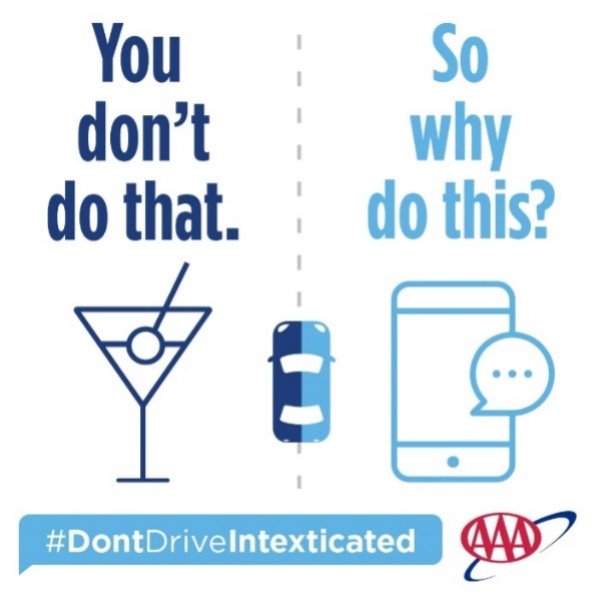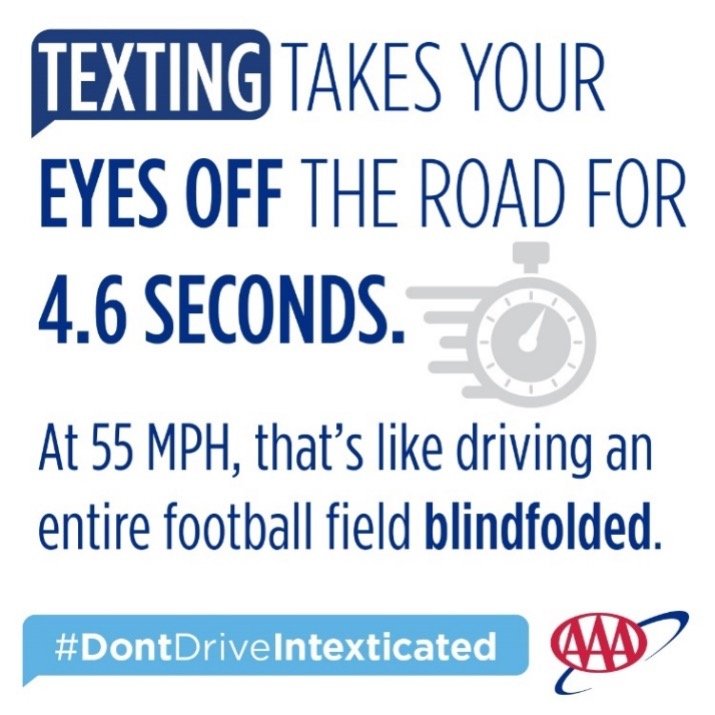April is Distracted Driving Awareness month
BOISE, Idaho (KIFI) – April is Distracted Driving Awareness month, and AAA is reminding drivers to keep their focus on the road through its annual safety campaign, “Don’t Drive Intoxicated, Don’t Drive Intexticated.”
Most people would never drink and drive, but they may not realize that distracted driving can have the same deadly consequences.

According to the National Highway Traffic Safety Administration, more than 3,100 people were killed in motor vehicle crashes in 2020 that involved at least one distracted driver. That’s an average of nine deaths per day, and a 1% increase from 2019 – despite a dramatic reduction in vehicle miles traveled during the pandemic. On average, 1,000 people are injured every day in distracted driving crashes nationwide.
In the Gem State, the number of distracted driving-related crashes, injuries, and fatalities all decreased in 2020, a possible side effect of less traffic on the road. But distraction was still a factor in 19% of Idaho’s crashes that year, with 22 people killed. According to the Idaho Transportation Department, 71% of all distracted driving crashes occurred on urban roadways, but 85% of distracted driving fatalities occurred on rural roadways.
“Our hope is that people will understand the risk involved. The average text takes your eyes off the road for 4.6 seconds, which at 55 mph is like traveling the length of a football field blindfolded. The problem gets even worse with the use of social media, GIFs, and videos,” AAA Idaho public affairs director Matthew Conde said. “We can all agree that the top priority is for everyone to make it home safely, and that means resisting the temptation to immediately respond to a text or email.”

AAA says many new vehicles are equipped with “infotainment” systems that allow drivers to talk, text, check email and use GPS, but that doesn’t mean that they’re safe to use while the vehicle is in motion. Since 2013, the AAA Foundation for Traffic Safety has studied the effects of distracted driving in partnership with the University of Utah. After testing the infotainment systems in 30 vehicles, 23 were found to produce high or very high levels of distraction for drivers.
“Even if you’re stopped at a traffic light, your response should wait. Our research shows that the effects of mental distraction can last up to 27 seconds after a task ends,” Conde said. “If you need to communicate immediately, please pull into a parking lot or turn the job over to a trusty co-pilot.”
What you can do
- Actively scan the road for other road users. In 2020, 480 pedestrians and 83 cyclists were killed in crashes involving a distracted driver.
- Keep it simple. Avoid texting, emailing, watching videos, etc. while driving.
- Input GPS directions and adjust mirrors, seats, and climate controls before you hit the road.
- Enlist the aid of passengers to help you drive safely.
- Keep emotions under control. Save stressful or exciting conversations or planning for after you’ve reached your destination.
“There’s a good rule of thumb – if what you’re about to do keeps you from giving your full attention to driving, it’s a distraction,” Conde said.





